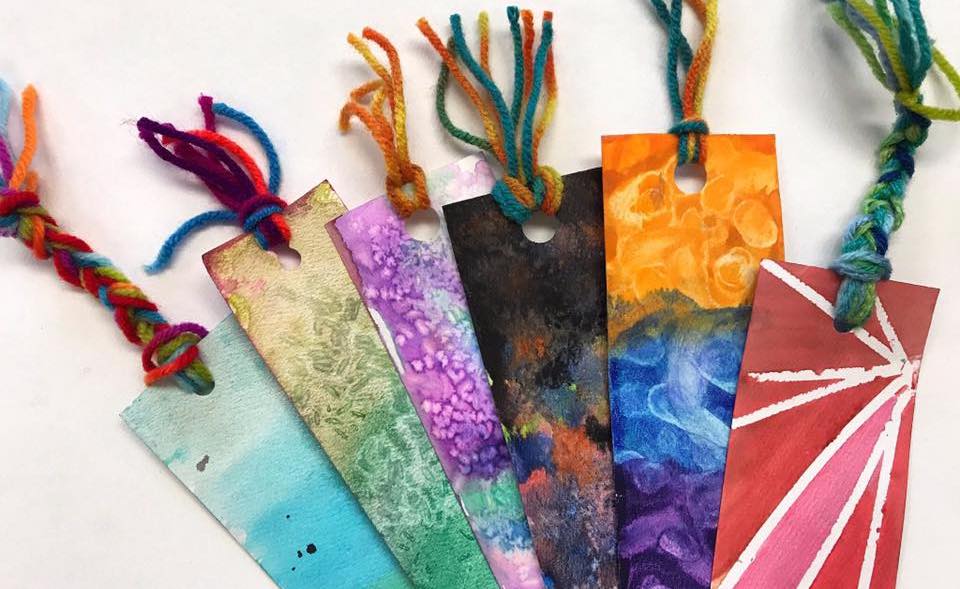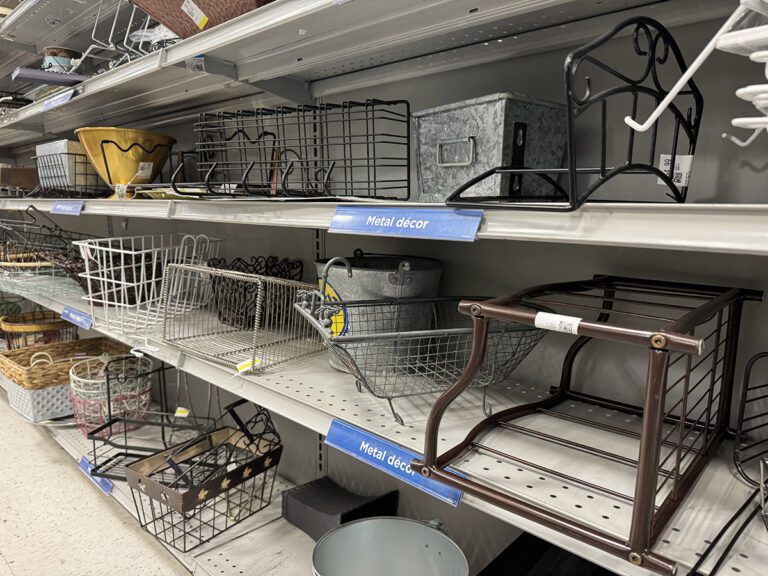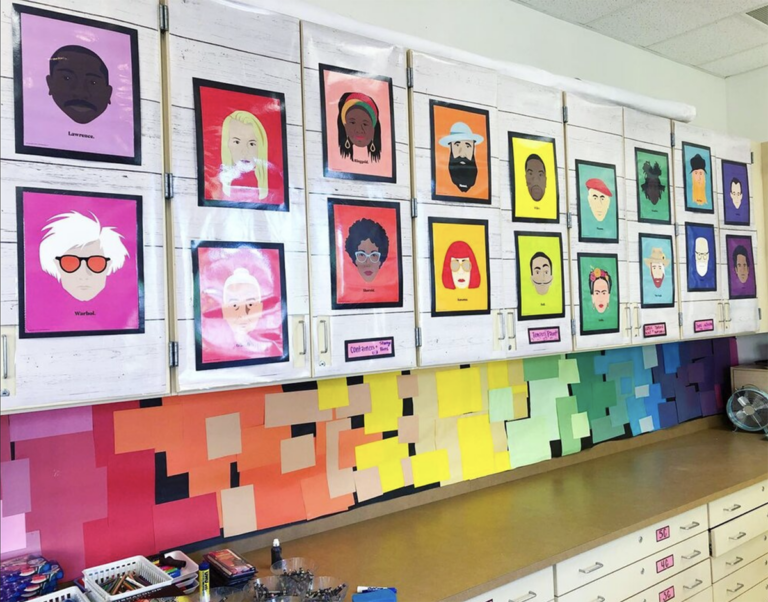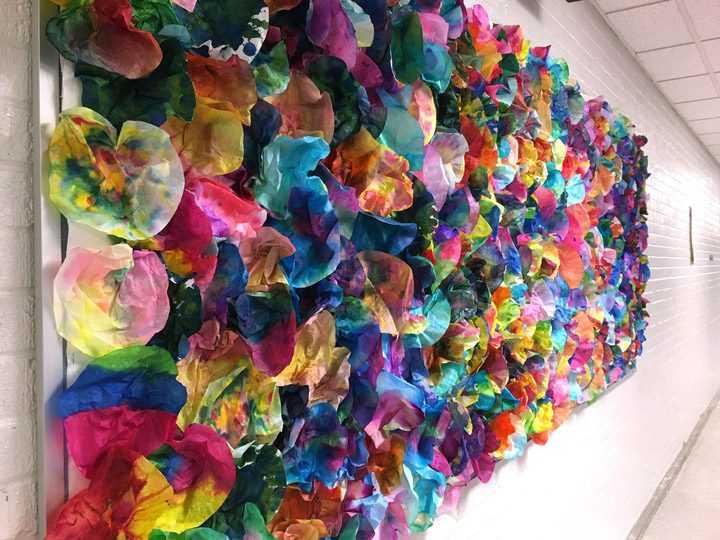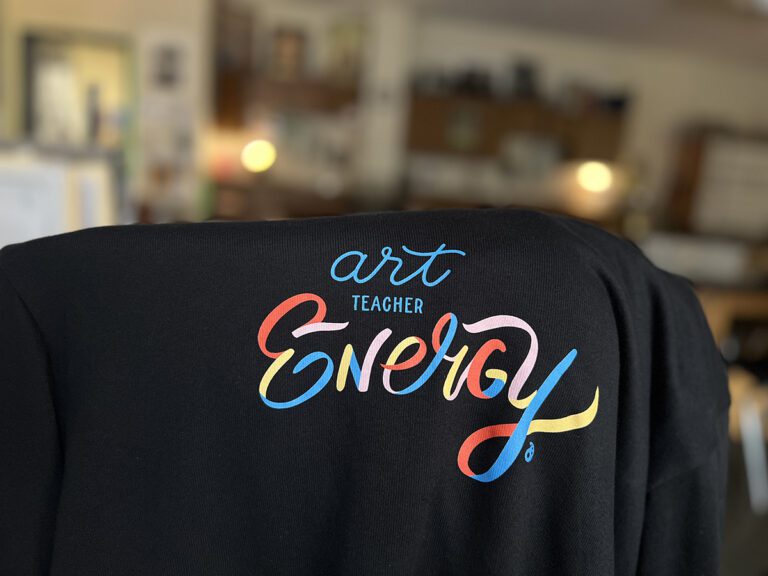Art teachers don’t waste anything. Our budgets are already limited, and we can’t afford to be anything but resourceful. It’s frustrating, however, when artwork is left behind or thrown away. It’s important to understand not all of our students might not want to take their work with them, although we really hope they do! Regardless, when a pile of artwork starts to build up, it seems like a waste to see it go in the recycling bin or trash can.
So, what can you do with all of those unwanted pieces of art? Here are six ways you can repurpose left behind work in your classroom.
1. Painted Paper and Collage Materials

Whether it’s a half-finished project or a piece of artwork left behind, one easy way to upcycle these pieces is by turning them into painted pape.r Sometimes, having the history of the original artwork underneath can add more dimension to the paper. The painted paper can be used in a plethora of ways to fuel other art lessons. Similarly, the left behind artwork doesn’t need to be painted but can be cut up into smaller pieces for students to use as mixed-media collage pieces. You never know—what one student left behind might inspire another’s work.
2. Sloppy Copies

Sloppy copies, messy mats, placemats—whatever you call them—are helpful tools in the art room to keep tables clean. The nice thing about them is that you can use them year after year. Every so often, they do need to be replaced. The next time you need to replenish your stock, take a look to see if you have any large left behind art pieces you can use. Over time those placemats can start to look quite beautiful. When they’ve reached their usage limit, they can be turned into painted paper or collage paper, as explained above.
Want more practical, time-saving tips? Attend Art Ed NOW!
3. Bookmarks

Have you ever been to your school library when new bookmarks arrive? Any school librarian can tell you they are gone in no time! A perfect way to repurpose artwork is to turn it into bookmarks. It can be as simple as cutting up an artwork into a bookmark size. You might even take it a step further and add a little yarn to the top of the paper. After making them, give them to your librarian to distribute. Your school community will love having the handmade bookmarks around.
4. Sketchbook Covers

Sketchbooks are an important tool at every grade level. However, we don’t want to use a large chunk of our budget money to purchase them for students. Yes, there are many inexpensive ways to make sketchbooks, but it’s nice if they have a little style! Whether it’s using painted paper as a sketchbook cover, repurposing artwork allows for each student to have something that is one of a kind!
5. Make Awards

Do you recognize art students of the week or give awards out at art shows? Sure, there are things you can buy, but why not try repurposing artwork to create handmade awards? Leftover artwork, combined with painted paper or unusable scraps, can be transformed into awards in a variety of ways. You can use these awards to fit your classroom needs, but with them, you’ll be able to provide something unique from the art room.
6. Create Buttons
Do you have a button maker at your school? Students love to add a pin of flair to their backpacks, pencil bags, and clothing. A perfect way to reuse worn out artwork is by transforming them into buttons. This can be turned into an awesome classroom activity that uses one of a kind creations to build school community, add personal flair, and even spread kindness.
Nothing needs to be wasted in the art room, even that unwanted artwork. The next time you find you have a growing pile of unclaimed artwork, try reusing it and turning it into something else!
What do you do with the unclaimed or unwanted artwork in your classroom?
In what other ways do you repurpose left behind artwork?
Magazine articles and podcasts are opinions of professional education contributors and do not necessarily represent the position of the Art of Education University (AOEU) or its academic offerings. Contributors use terms in the way they are most often talked about in the scope of their educational experiences.
